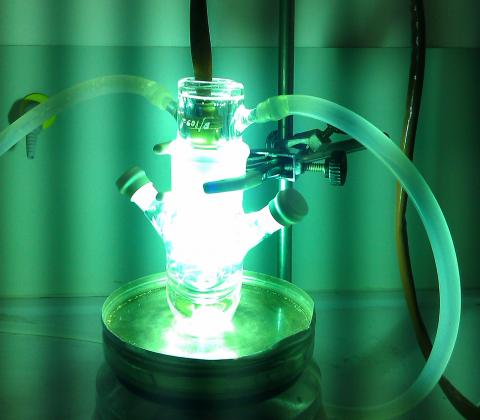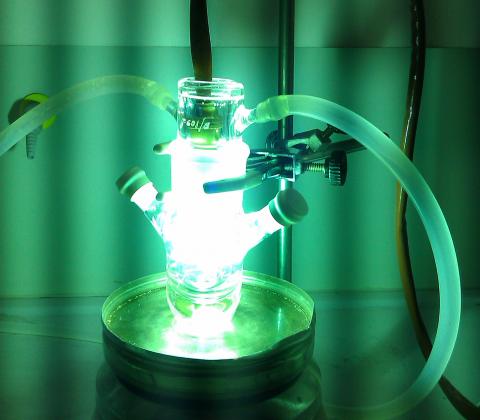
Membrane permeabilization by light involves contact between photosensitizer and the lipid double bond, yielding membrane-disrupting aldehydes
Redoxoma Highlights by Mauricio da S. Baptista
Light is fundamental for life, making feasible processes such as photosynthesis, and vision. Photodynamic therapy is a clinical modality able to treat a variety of diseases with light. However, light it is also responsible for spoiling foods and for the development of skin cancer, due to photosensitization reactions, in which molecules transform light energy into chemical reactivity, very frequently causing oxidations. Our group has accumulated evidence that membranes are key targets of the photo-induced reactions. The general mechanisms of lipid photo-oxidation have been known for a long time, but oxidation by singlet oxygen, which is a diffusing molecule, does not suffice to explain the known fact that photosensitizers that bind to membranes are more effective in making them permeable and therefore in destroying cells. We designed experiments to measure efficiency of membrane leakage by photosensitizers delivering almost the same amount of singlet oxygen to the membranes, but having a significant difference in the extent of the direct physical contact with lipid double bonds. We also identified and quantified all products generated by photosensitizers, such as hydroperoxides, alcohols, ketones and phospholipid aldehydes. We found that there always is significant accumulation of truncated lipid aldehydes in leaking membranes. Another important result was that permeabilization of membranes was invariably coupled to photobleaching, i.e., the photosensitizer gets degraded. Therefore, if one wants to have a more effective photosensitizer, we have to find new ways to regenerate it. Also, as a strategy for developing more efficient sunscreens, we need to create a way to prevent aldehydes from building up. This study was carried out as a doctoral project of Isabel Bacellar, the first author of the article, and involved the collaboration of CEPID researchers Redoxoma Paolo Di Mascio and Sayuri Miyamoto. Ronei Miotto and Rodrigo Maghdissian Cordeiro (Federal University of ABC), Professor Gonzalo Cosa (McGill University, Canada) and Professor Mark Wainwright (Liverpool John Moores University, UK) also participated in the study.
Related article:
- I. O. L. Bacellar, M. C. Oliveira, L. S. Dantas, E. B. Costa, H. C. Junqueira, W. K. Martins, A. M. Durantini, G. Cosa, P. D. Mascio, M. Wainwright, R. Miotto, R. M. Cordeiro, S. Miyamoto, M. S. Baptista. Photosensitized Membrane Permeabilization Requires Contact-Dependent Reactions between Photosensitizer and Lipids Journal of the American Chemical Society, 140(30): 9606-15, 2018 | doi: 10.1021/jacs.8b05014
Mauricio da S. Baptista, PhD. Professor at Department of Biochemistry,
Institute of Chemistry, University of São Paulo, Brazil
 Post image credits
Post image credits
Add new comment